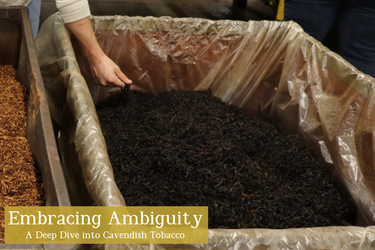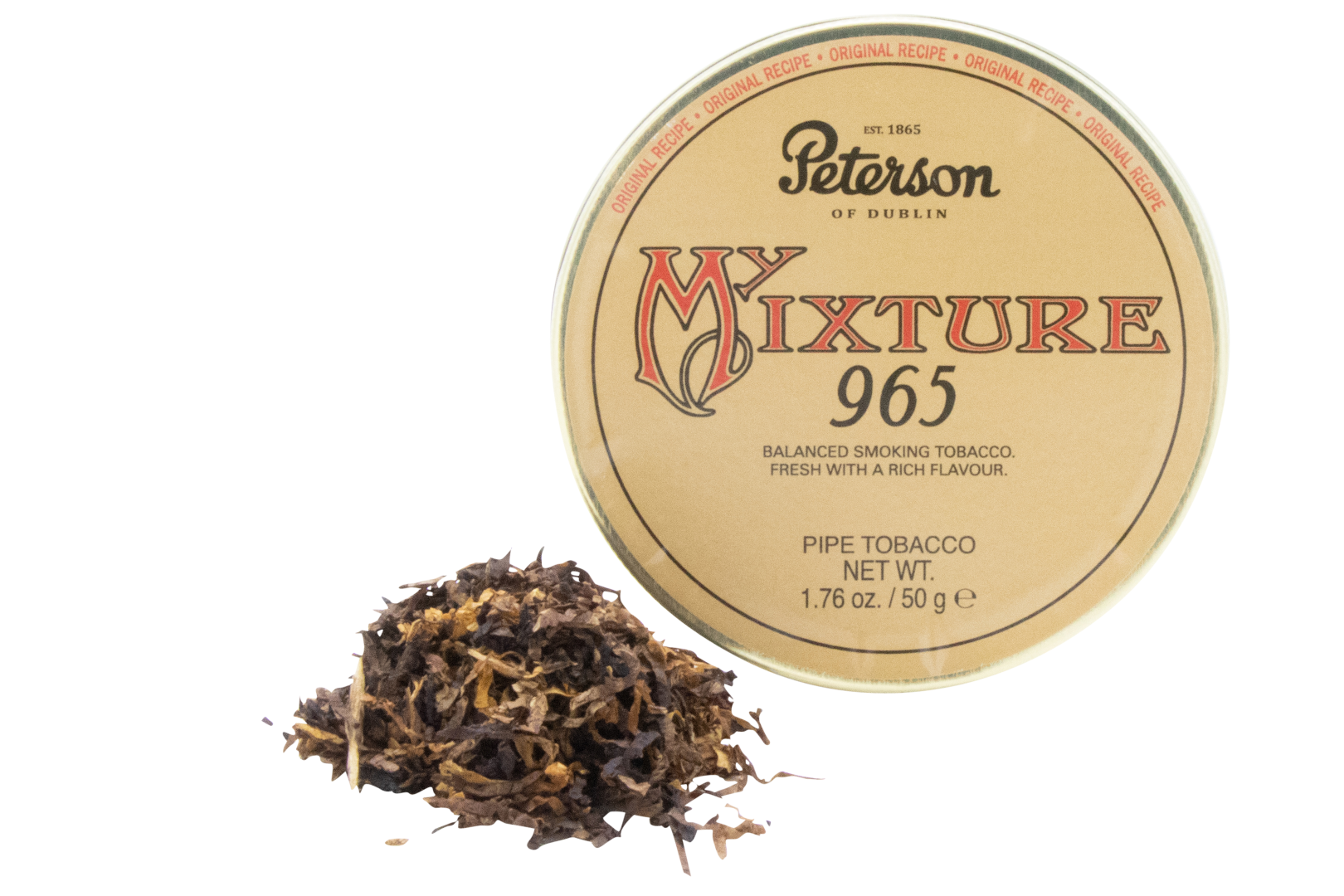Embracing Ambiguity - A Deep Dive into Cavendish Tobacco
Posted by Greg Rosenberg on 23rd Nov 2022
Cavendish origins
U.S. and English Style Cavendish
Black Cavendish
How Cavendish is used in a blend
Stoved Virginia
Brown Cavendish
Unflavored Cavendish
Blend base
What is Cavendish tobacco? The first thing you’re likely to hear is that it’s not really a tobacco as much as a process. This isn’t so unusual to us tobacco pipe smokers—only after pressure fermentation can we have Perique, and it simply isn’t Latakia if it hasn’t been fire-cured.
However, these process-specific tobaccos are also defined by the source tobacco—i.e., the varietal that undergoes the process—and we take care to denote discrepancies when they arise. For instance, Perique's source tobacco is a particular Burley cultivated in St. James Parish, Louisiana. When there was a departure from this precedent—using a mixture of the St. James with Green River Burley—we got Acadian Perique, and appropriately designated the original as St. James Perique. We similarly differentiate Syrian and Cyprian Latakia, distinguished by the Oriental source leaf and the woods over which they’re fire-cured.
Basically, there’s some variation, but it's all pretty tidy.
Cavendish is the wild west. Yes it’s a process, but it can refer to any tobacco that has gone through that process, and the degree to which the process is employed can vary. The terminology around Cavendish tobacco can often feel like a vernacular mare’s nest, where terms with half-baked definitions have a semantic reach that can cause confusion. And as we’ll see, the word Cavendish is sometimes used to describe tobacco that hasn't been through the Cavendish process at all.
In this blog, I would like to explore the elusive Cavendish through its history and modern usage to make sense of the broad way we think about this important component of pipe tobacco.
Origins of Cavendish
Like with so much tobacco history, especially concerning ways of processing or adulterating leaf, there’s some lore involved. This one goes back to the late 1500s with the travels of Sir Thomas Cavendish (sometimes spelt Candish).

Thomas Cavendish
In his voyages to the "New World," Cavendish was reported to have experimented with tobacco that he transported (which would have been Nicotiana rustica, as John Rolfe wouldn’t introduce Nicotiana tabacum to Virginia until the early 17th century). The reports of this experimentation vary; Dale Harrison writes in "Back to Basics - Cornerstones of New World Tobacco" for Pipes and Tobaccos magazine, “some accounts that cover the period describe Cavendish applying sugar to tobacco, probably dipping the leaves in sugar water. A few suggest he either stored tobacco in rum barrels or directly applied rum to the leaves.”¹
Harrison goes on to explain that in the centuries to come, methods of flavoring tobacco expanded from Cavendish’s innovation, being hailed as one of “the most decorated U.S. agricultural products” at the 1851 World’s Fair in London.
Through the years "Cavendish" has taken on a broad definition. It's used liberally and has made friends with plenty of adjectives. Read some pipe tobacco reviews—whether authored by casual hobbyists or the cognoscenti in the Trial by Fire column of old Pipes and Tobaccos issues—you'll run into toasted Cavendish, stoved Cavendish—red, dark, (un)flavored, (un)sweetened, blonde, golden; the list goes on.
Let’s start in the simplest of terms—Cavendish usually refers to a tobacco that has been darkened through a process of steam, heat, and pressure. It is often flavored but that’s by no means a hard rule. Though less common, Cavendish may also be used to refer to a tobacco base that has not been through the Cavendish process as we understand it.
Much of the confusion arises from how different the output of this process can be based on myriad factors, and how different approaches have developed over the years. Let’s look at how some of those differences arose on both sides of the Atlantic.
US and English Style Cavendish
|
…the admixture of sugar, treacle, and other substances with the roll tobacco does not find much favour in this country, and consequently little is done in that line. In America this kind of manufacture is very popular , and in the columns of the recognized tobacco organs of the trade in that country numerous advertisements will be found of mixtures or “pastes" for this purpose.² Tobacco Whiffs for the Smoking Carriage - 1874 |
It seems "Cavendish" in reference to a particular process and cut of tobacco came into the lexicon around the mid-19th century. Even early on, flavoring was not requisite to Cavendish, as we see "sweetened" and "unsweetened" varieties. But from some of the earliest mentions of this style of tobacco, there seems to be distinct American and English/European approaches to Cavendish. Still today, the customs differ in how Cavendish is made.
The American style is associated with generous top flavoring, which we often identify with Aromatic tobacco blends. The American style is traditionally Burley based. The English Cavendish uses Virginia tobacco. Of course, there are no hard and fast rules—especially today. As we’ll see, it is not at all uncommon for American manufacturer’s to make a Virginia based Cavendish, or unflavored Cavendish. But looking back on the history gives us some insight on how these styles came to be.
English Purity Laws
We often hear of the emergence of the “English” blend genre being a result of strict purity laws that didn’t allow for added flavorings by British manufacturers. In fact, English blends were once broadly interpreted as non-Aromatics, a more encompassing genre than the Latakia blends we apply the name to today. Well it seems such regulation may be important to this development of different Cavendishs as well.
Notes from Parliamentary debate leading to the Tobacco Duties Bill of 1863 give us some insight into the state of UK tobacco regulation at the time and its impact. It seems that import duties on manufactured tobacco were unreasonably high, so as to stymie foreign competition and give “a monopoly to the home manufacturer."³ But this had the opposite effect in the case of Cavendish. The production of "sweetened Cavendish" was prohibited in England, and although import was also banned, that measure “did not take practical effect,” and much sweetened Cavendish was smuggled and sold in the UK. This led to a decision to lessen the import duties, as well as allowed for the domestic manufacture of sweetened Cavendish in bond.
However, this didn’t do much to promote the British manufacture of sweetened Cavendish. In his 1881 work, The Tobacconist, a Guide to the Retail Trade, William Robert Loftus writes:
By the revenue laws, manufacturers in this country are now allowed to use sweetening or flavouring matter in the preparation of Cavendish…for the purposes of imitating foreign tobaccos of the same kind ; but the manufacture must be conducted in bonded warehouses, away from their ordinary manufacturing premises, under the supervision of the Customs, and the tobacco vended in stamped and labelled packets. 4
It seems even after the 1863 bill, sweetened Cavendish didn’t exactly catch on in England. Most of it was imported. The existing restrictions on production likely played a role, but there's reason to believe the English palate had found fondness for other styles of blending.
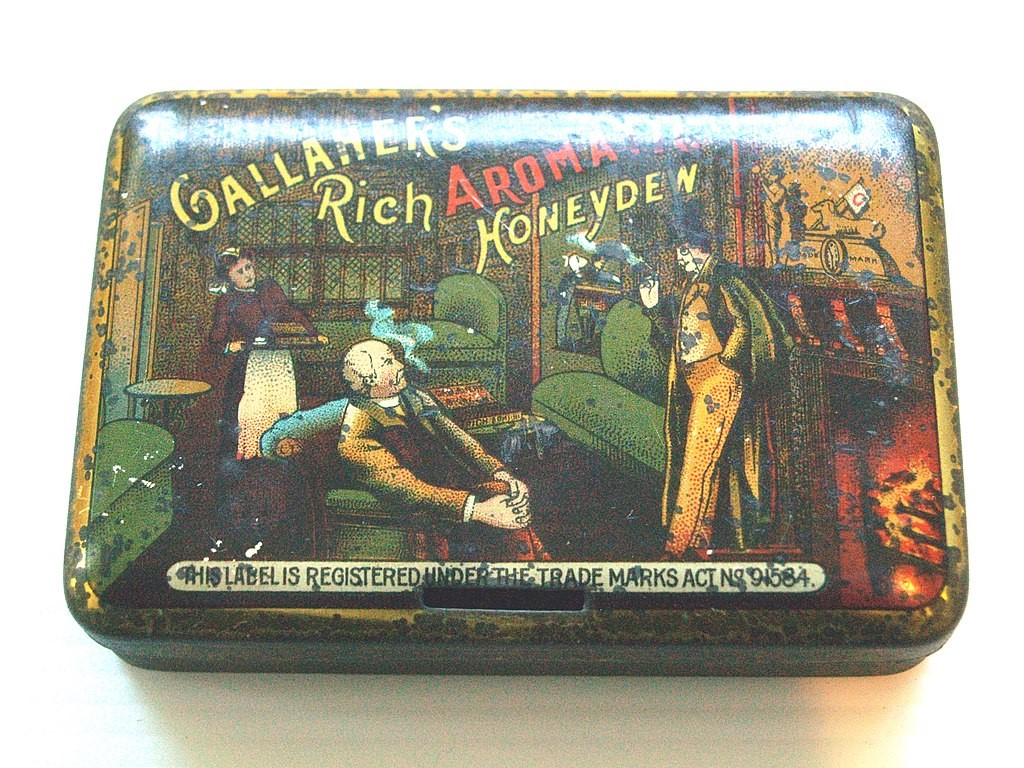
Old tin of Gallaher's Rich Aromatic Honeydew
Loftus tells us of another interesting tobacco process—Honeydew. He explains Honeydew as “cavendish without the dark colour which the great bulk of cavendish possesses, and also...without the molasses or liquorice used in the preparation of sweet cavendish.” It seems that although most sweetened Cavendish was imported, there was plenty of riffing on the process happening within the limitations placed on British manufacturing.
What does this all mean? Speculation incoming—
This history seems to lend insight into the development of the US's association with top flavor and the UK’s “brown Cavendish” as it might be called (a term we’ll be talking about a bit more below). One can also see how Virginia tobacco makes sense as the base for unsweetened Cavendish, as it has more natural sugar. Likewise, Burley—even before being made into Cavendish—is somewhat neutral and takes on flavor well, making it a practical base for flavored Cavendish.
Black Cavendish
I mentioned all these names you may hear with "Cavendish," but one title seems to dominate—so what's Black Cavendish?
A 1903 issue of a British periodical, Truth, includes a rebuke of the War Office for mismanagement of taxpayer funds on unfavorable tobacco that was going to waste. The author claims that, although aware that the tobacco was undesirable to these young British men, the office “proceeded to make large purchases of black Cavendish tobacco in cakes in the United States.”5 The tobacco in question is described as “the strongest kind of American cake tobacco, which is saturated with molasses to the extent of 30 per cent or more…”
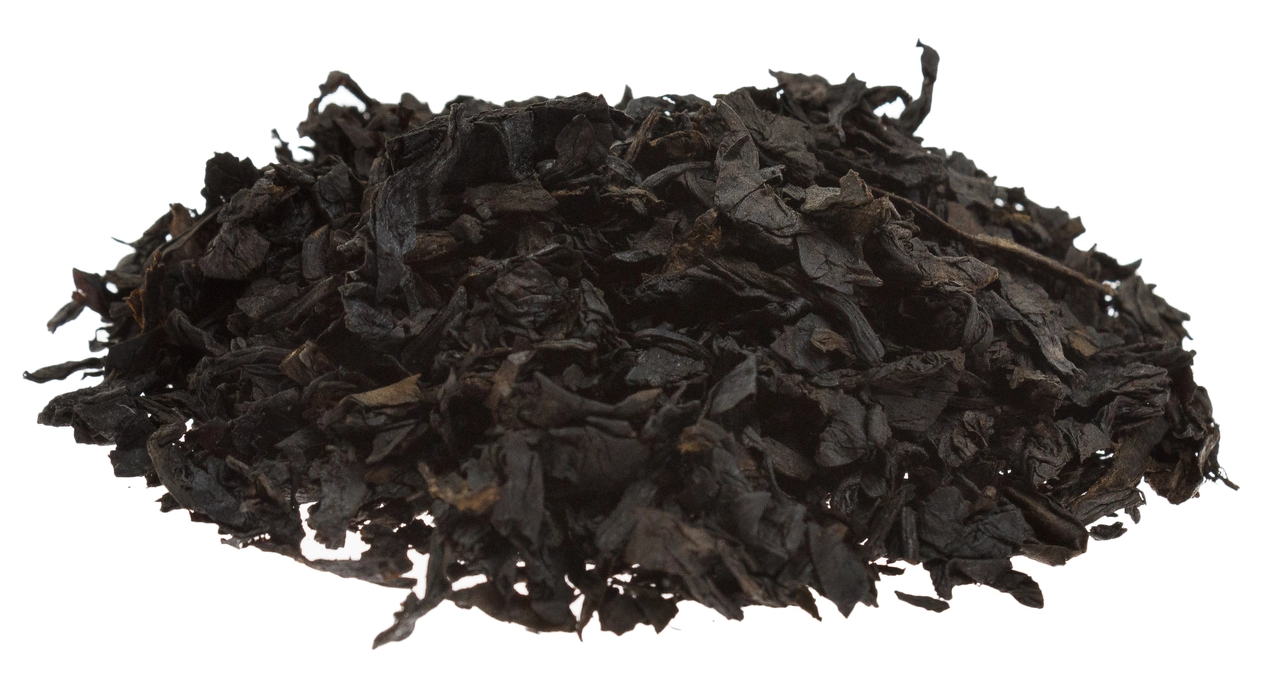
Cornell & Diehl Black Cavendish
My guess is that Black Cavendish began as a term for the American style—generously flavored and especially dark.
Today, Black Cavendish is any tobacco that has been put through the processes of heat, steam and pressure to the point of significant darkening. Different terms might be favored when the leaf isn’t darkened nearly black—but we’re talking about degrees of the same process.
However, within this basic criteria exists much room for variables. The type of tobacco being used in the process is of course important, but also the particulars of how the blackening of the leaf is achieved. Manufacturers will have their own methods and equipment for this process.
When you take a largely variable product, in an industry lacking standardized terminology, you can bet there will be plenty of opportunity for confusion. There’s a number of loosely defined terms around the process, and I’ll try to clear some of that up—but first, let’s look into why putting tobacco through the process is desirable at all.
How is Cavendish used in a blend?
While this process and the leaf used may look quite different from one blending house to the next, heat, pressure, and steam are principal to the Cavendishing process. So why would we want to do this with the leaf?
Much of Black Cavendish’s allure has to do with its utility, you could say. For starters, Black Cavendish is almost always made from Burley or Virginia, tobaccos notoriously suited to the base of a blend. Dark leaf usually makes us think of bold condiments such as Perique or Latakia, darkened through extended pressure fermentation or fire-curing—the dark shade of Black Cavendish however belies the leaf’s exceptional mildness. The process cooks out most of the tobacco flavor, leaving a very neutral profile. This makes the leaf especially adept in taking on flavor, hence why it’s common in Aromatic mixtures.
Put simply, it’s a great vehicle for other flavors. But this neutral attribute can serve a non-Aromatic blend all the same, melding the tobacco flavors and casing.
Additionally, its mellow characteristic is often appreciated for tempering harsher attributes of the other tobaccos, “smoothing the rough edges” as it’s often put. Having already been “cooked,” it doesn’t get as hot and can facilitate an even and cool smolder of a blend.
Black Cavendish can also bring more volume to a smoke. Often we’ll hear it described as “creamy.” While this imparts a satisfying sensory experience, it also allows the flavor to better express on the full palate.
However, it’s not all about these utility or sensory contributions. Black Cavendish offers something in taste as well. Though we describe it as “neutral,” the blackened leaf isn’t totally without flavor of its own. The process caramelizes the natural sugars offering a sweet note that’s often described as brown sugar or molasses-like.
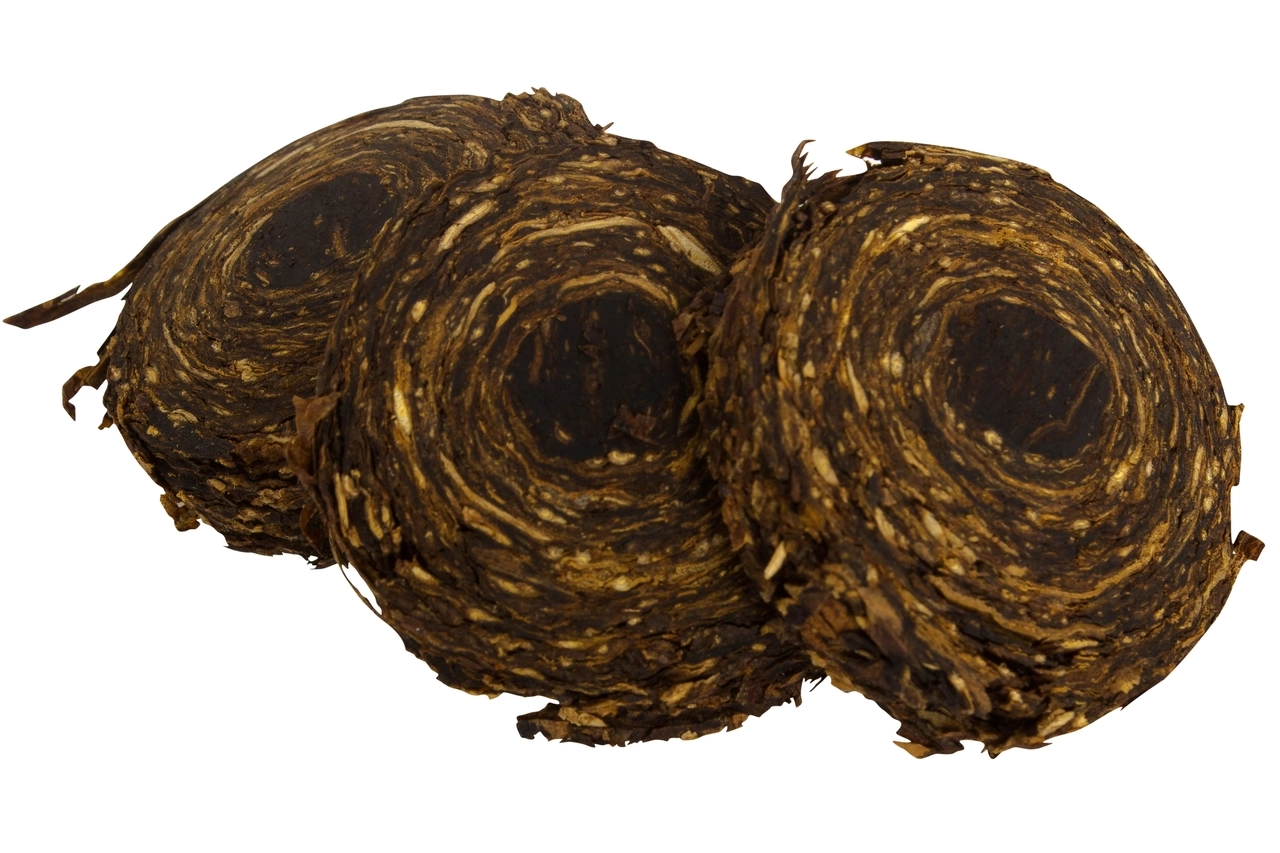
Peter Stokkebye PS 403 Luxury Bullseye Flake - Virginia Perique coins with Black Cavendish center
I’m particularly fond of its use in a number of Virginia blends such as Davidoff Flake Medallions, Mac Baren Dark Twist, or Peter Stokkebye PS 403 Luxury Bullseye Flake. That caramelized sugar with bready Virginia seems to bring forth a delightfully toasty sensation that reminds me of a freshly baked confection. Then contrasted with some bold condiment such as Perique or Kentucky Fire-Cured, and you can get some wonderfully dynamic results.
All in all, Cavendish is an incredibly diverse tool in the blender’s arsenal.
Navigating the language
Clearly, Cavendish has many uses, but there’s a lot of variation with the product itself. Being a process, different production customs crystalize regionally, as does terminology.
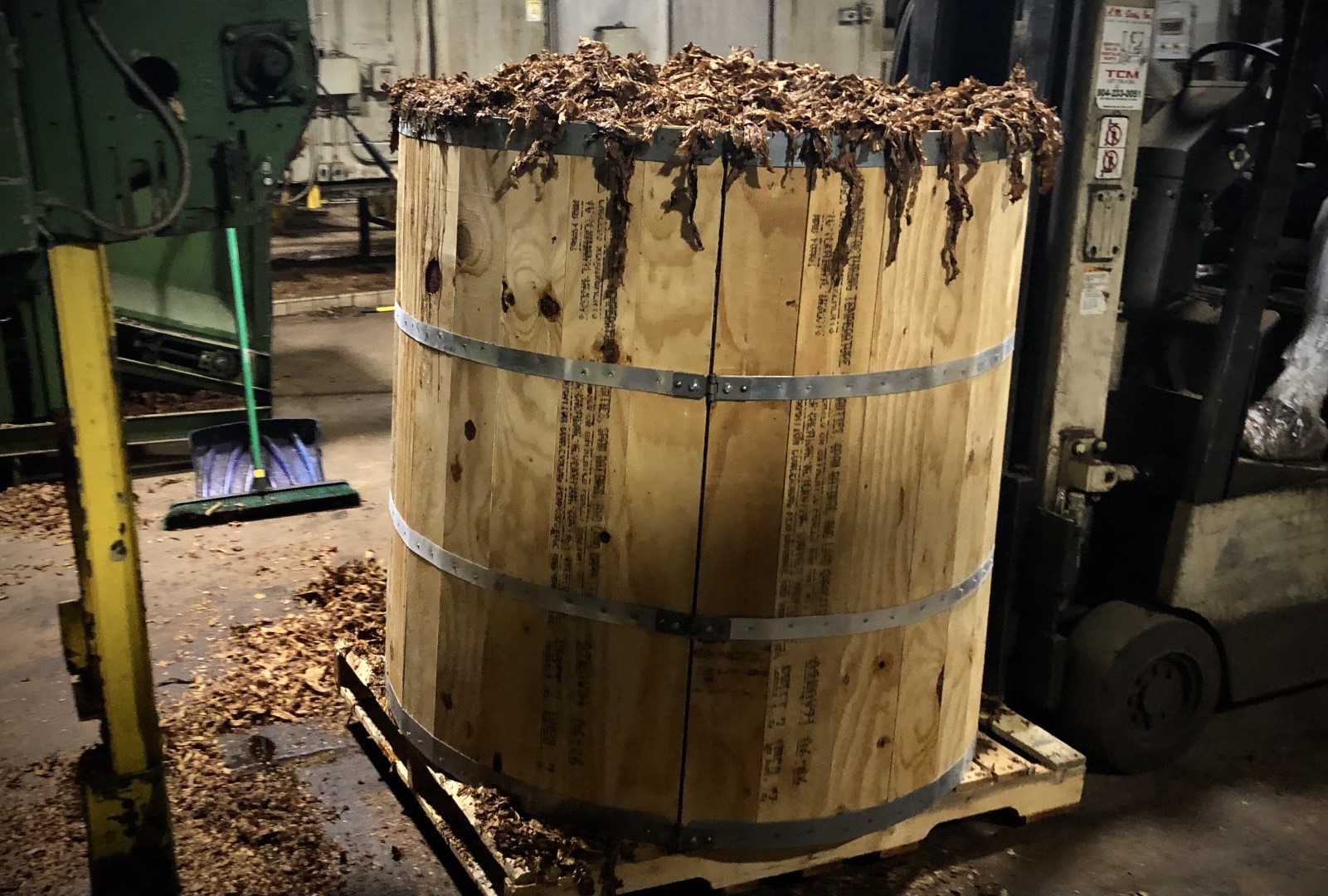
Burley after sugar casing - ready to be blackened
Even narrower from regional norms, the product will vary from blending house to blending house. Every operation has their own recipe—the varietal used, grade of the leaf, if and how the leaf is cased, machinery used, and adjustments to the process, such as how long the leaf is steamed or held under pressure. Each manufacturer will have their own proprietary process, and may even employ more than one approach depending on the Cavendish’s destined mixture. Naturally, such a diverse product can spur some jargon.
Let’s take a closer look into some of the vernacular used around the Cavendish process—
Stoved Virginia
Note: I’ll refer to Black Cavendish made with Virginia tobacco as Virginia Cavendish for brevity. I’ll do the same with Burley Cavendish.
While Virginia Cavendish is the norm in Europe, it has its place in the States as well, which brings us to our first term worth looking into.
For a while, “Stoved Virginia” confused me. I understood that Black Cavendish was—irrespective of the source tobacco—leaf that had been through the process of heat, steam, and pressure. I thought that a Stoved Virginia then had to be something a little different, maybe a cousin to Black Cavendish with a small discrepancy or two in the process.
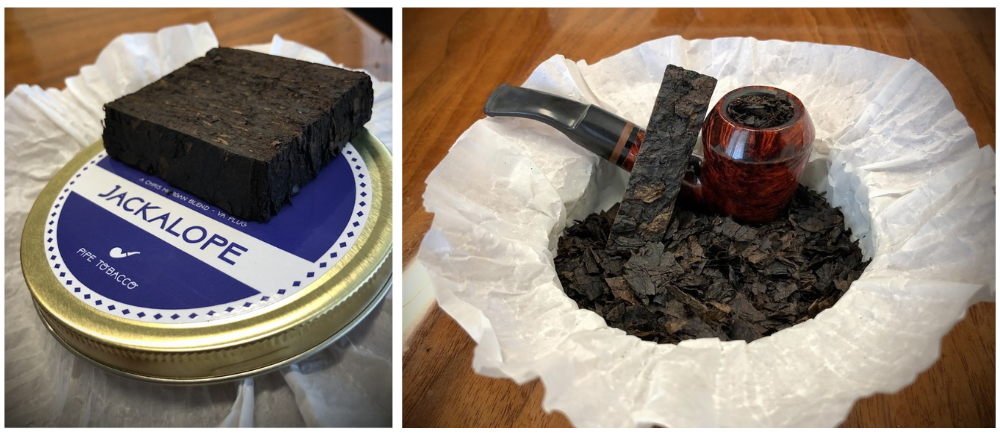
Chris Morgan Jackalope - Stoved Virginia Plug
No, it’s just another name for a Virginia processed into Black Cavendish. Seeing as Burley Cavendish is the traditional American method, I wonder if perhaps Stoved Virginia was adopted by US manufacturers as the name for Virginia Cavendish as means of distinguishing from Burley Cavendish. Again, I speculate.
That said, understanding a Stoved Virginia to be no different than Virginia Cavendish may not be right in all cases. Some blending houses may have their own terminology that is standardized within their operation that distinguishes Stoved Virginia from Virginia Cavendish.
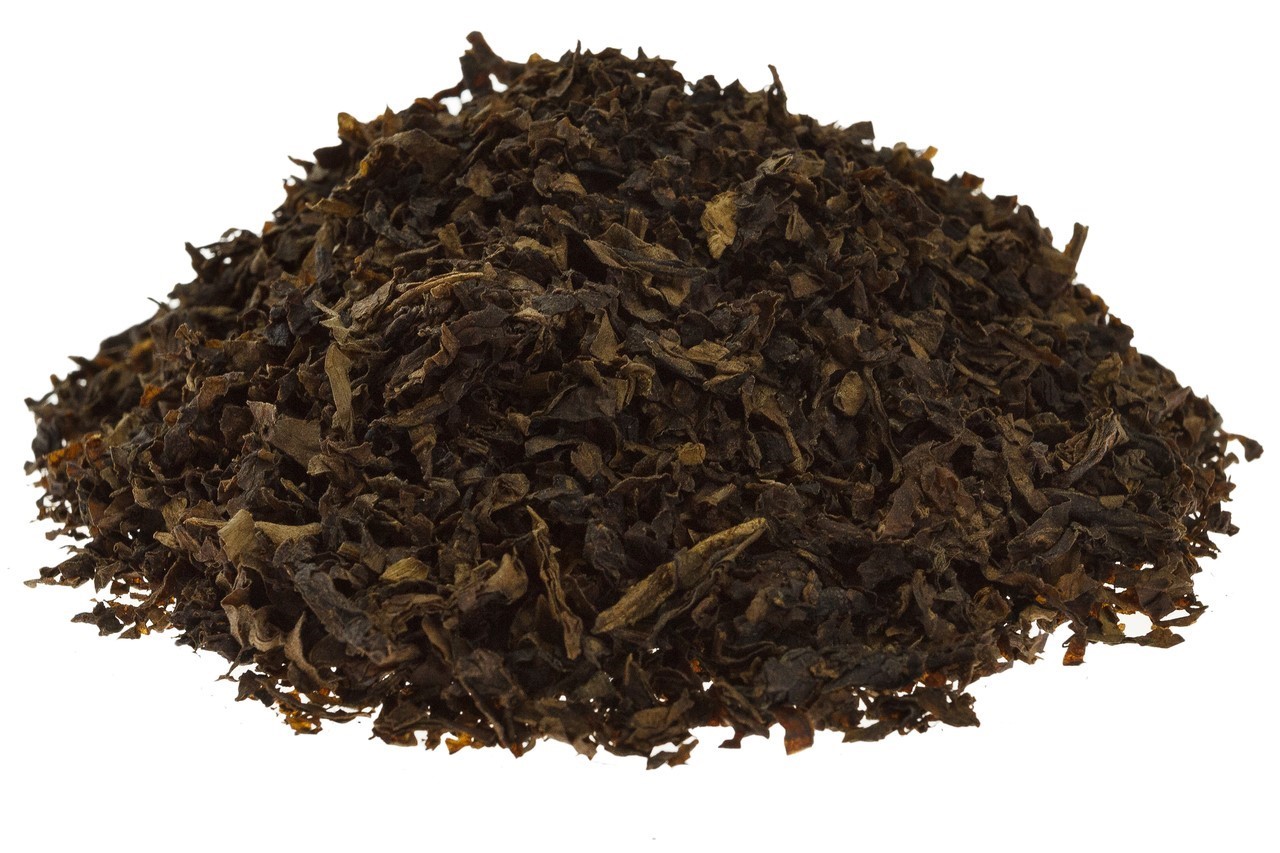
Cornell & Diehl Red Virginia Cavendish
For instance, Cornell & Diehl offer a Red Virginia Cavendish as a blending component, but it is also used in a few of their blends such as the classic Aromatic, Autumn Evening. The tin description even reads “Cornell & Diehl’s proprietary Red Virginia Cavendish…” (emphasis added).
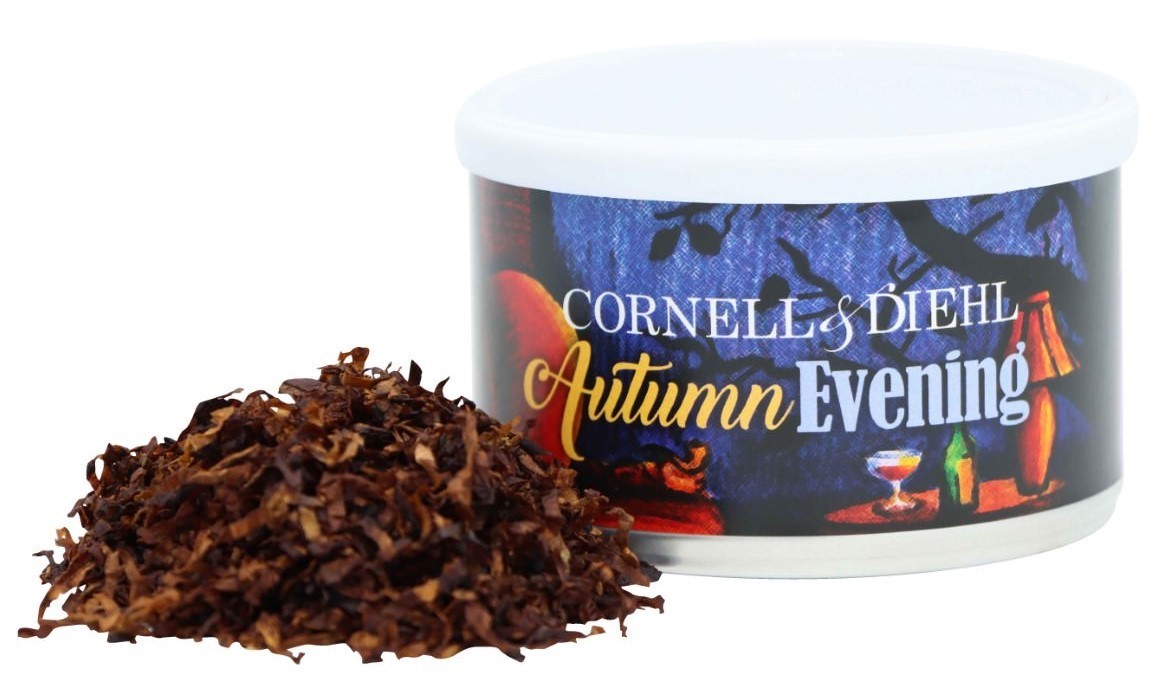
Cornell & Diehl Autumn Evening
However, Cornell & Diehl manufactures other blends whose descriptions reference Stoved Red Virginias, such as Star of the East, Yorktown, and Two Friends Redwood. It seems there could be a distinction in how they treat these Reds which informs whether they’re deemed Stoved or Cavendish. Or maybe I'm just getting overly pedantic about an interchangeable term.
Brown Cavendish
Brown Cavendish—this is another term you might hear used a few different ways.
In my digging for this piece, I've mostly found it used in casual discussion, reflecting the apparent lightness of the leaf compared to what you’d expect Black Cavendish to be. Basically saying, this doesn’t seem to be steamed and pressed to the extent of Black Cavendish, thus modifying the name. Again, degrees of the same process.
An example to consider is Gawith Hoggarth & Co's Brown Cavendish. The description begins “a little stronger compared to black cavendish…” which certainly gives the impression that it’s been through an abbreviated Cavendish process, not blackening and mellowing the leaf to the degree that Black Cavendish is. The description also tells us the Brown Cavendish is “based on a pure burley blend…” This is interesting, because another way we hear “Brown Cavendish'' used is in reference specifically to Virginia Cavendish (European/British Cavendish you may also hear).
The swap in colors isn’t too surprising given Europe’s tradition of Virginia Cavendish. It does seem that Virginia Cavendish retains a bit lighter shade compared to Burley Cavendish. Of course, top flavoring lends to the darkness of the leaf as well, which likely factors into the association with American blending and Black Cavendish.
Peterson My Mixture 965 (formerly Dunhill) is the quintessential example of a Brown Cavendish English blend.
Unflavored Black Cavendish
We often see the component tobacco referred to as “unflavored Black Cavendish” in tin descriptions. Ironically, it was the straight forwardness that sent me astray when I was first getting into pipe smoking. Unflavored Black Cavendish is exactly what it sounds like. Black Cavendish that hasn’t been flavored. But then again, that’s also what Black Cavendish is.
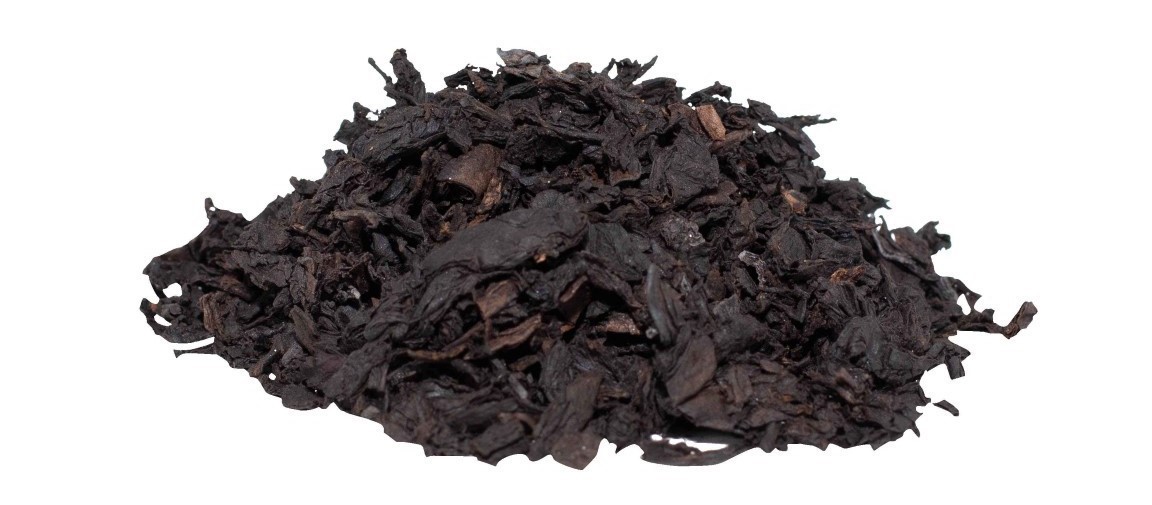
Sutliff TS23 Black Toasted Cavendish
Though "Black Cavendish" doesn’t inherently imply flavoring, I can see why a blender or manufacturer might want to elaborate that the blend in question is not an Aromatic, given the association between the blend type and Black Cavendish.
“Toasted Black Cavendish” may also be used to mean unflavored.
Cavendish as a blend base
We come now to the other way we see the word “Cavendish” applied—essentially meaning a base tobacco blend that has not been processed as Cavendish as we know it. You may also see this called “Golden Cavendish,” but that term is also used for Cavendish processed from Bright Virginia.
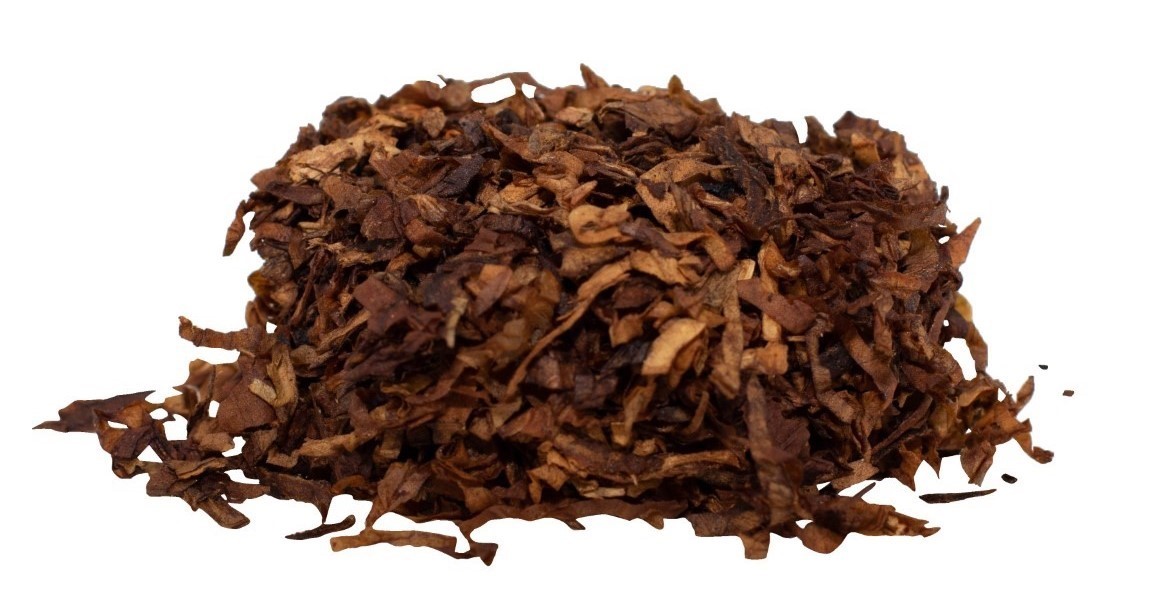
Sutliff J6 Golden Cavendish - A base blend Virginia and Burley with a vanilla casing
Now, many would say that this usage is a misnomer and isn’t Cavendish at all. Maybe so, but the objective of this piece is not to prescribe—I’m wearing my descriptivist hat here.
This base that often sports the Cavendish name usually consists of Burley, Virginias—sometimes even Black Cavendish—and with some form of casing. Why might these mixtures be called Cavendish?
Well first, I wouldn’t get too hung up on the why. Without a standardized terminology, it’s likely not so calculated, but a matter of natural semantic broadening. And if you think about it, you don’t have to stretch the traditional usage too far to get there. If we were to classify Cavendish less by how it’s processed and more by its utility as a base ideal for topping with flavoring and/or condimental tobacco, it isn’t a far cry.
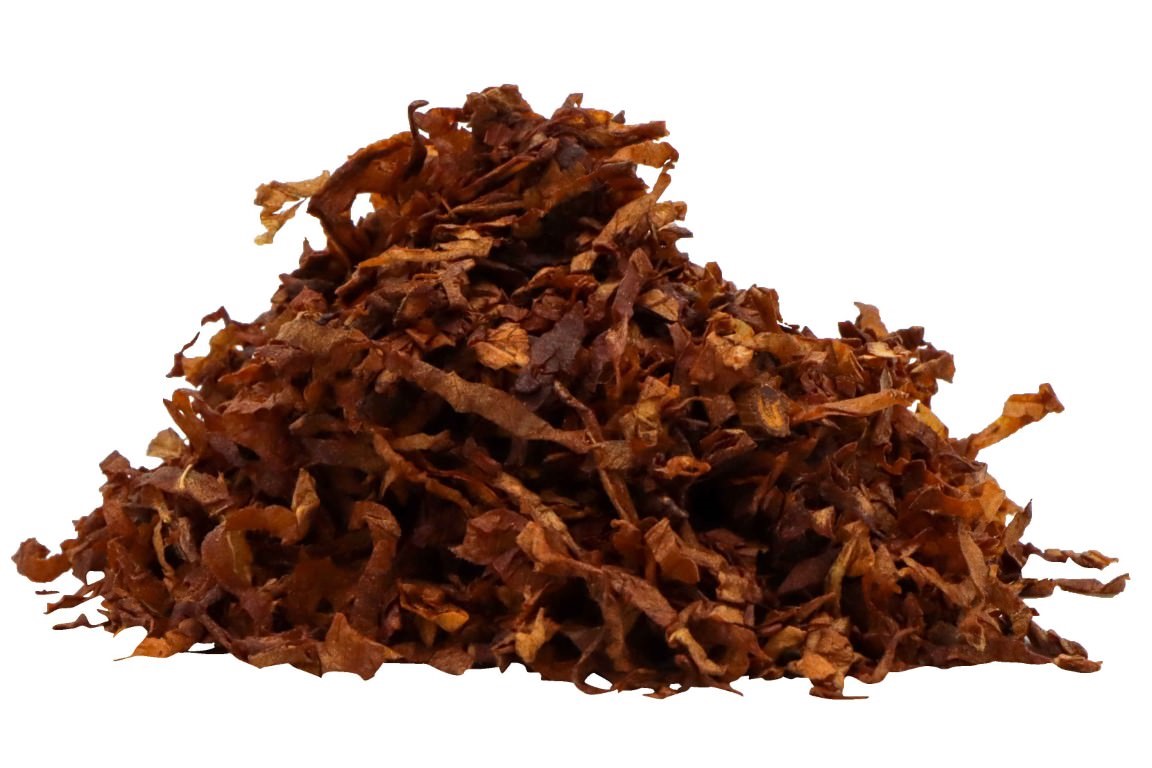
Cornell & Diehl Chocolate Cavendish - Chocolate and cocoa bean flavoring atop their traditional Cavendish base
In fact, we can see a very early instance of such a broad interpretation from the 19th century UK regulations. W. A. Penn writes in The Soverane Herbe - A History of Tobacco in 1902, “as any tobacco containing sweetening comes under the Customs' designation of…cavendish, the bright-flake sweetened tobaccos, now very popular, are so-called, though they scarcely resemble true cavendish, which is very black and strong.”6 By this measure, Cavendish is simply a flavored tobacco blend.
(Note: This is the second source I ran into from this period referring to the American style Cavendish as strong. Interesting, as we know Cavendish to be mild—a mellowing agent in fact. My best guess is this is in reference to the rich flavor, or perhaps the process at the time didn't steam out that nicotine quite so much. You could see then how the Burley Cavendish might be harsh to palates acclimated to the nic-light Virginia. Some things remain a mystery!)
Takeaway...
When I say "embracing ambiguity," I really mean it. As I wrote, I'm not trying to prescribe. I was not compelled to write about the Cavendish thicket because I thought I could untangle it. I just wanted to get a better look at it. I don't really think it needs correcting or tidying up. You can't tame language, but you can learn a lot from one little word. And chasing down "Cavendish" has been a fascinating voyage.
References:
- Dale Harrison. “Back to Basics - Cornerstones of New World Tobacco.” Pipes and Tobaccos Magazine, Spring 2019
- Mann Nephews. Tobacco Whiffs for the Smoking Carriage: Being Mainly a Reprint of Articles which Appeared in a London Daily Paper (1874)
- Great Britain, Parliament. Cobbett's Parliamentary Debates, Wyman (1879)
- W. R. Loftus. "The Tobacconist" - A Practical Guide to the Retail tobacco Trade in all its Branches (1881)
- Truth Volume 54 (1903)
- W. A. Penn. The Soverane Herbe: A History of Tobacco, Grant Richards (1901)
Attributions:
- Willem and Magdalena van de Passe; The Man in Question (original uploader), Thomas Cavendish, Public domain, via Wikimedia Commons
- Auckland Museum, CC BY 4.0 <https://creativecommons.org/licenses/by/4.0>, via Wikimedia Commons

